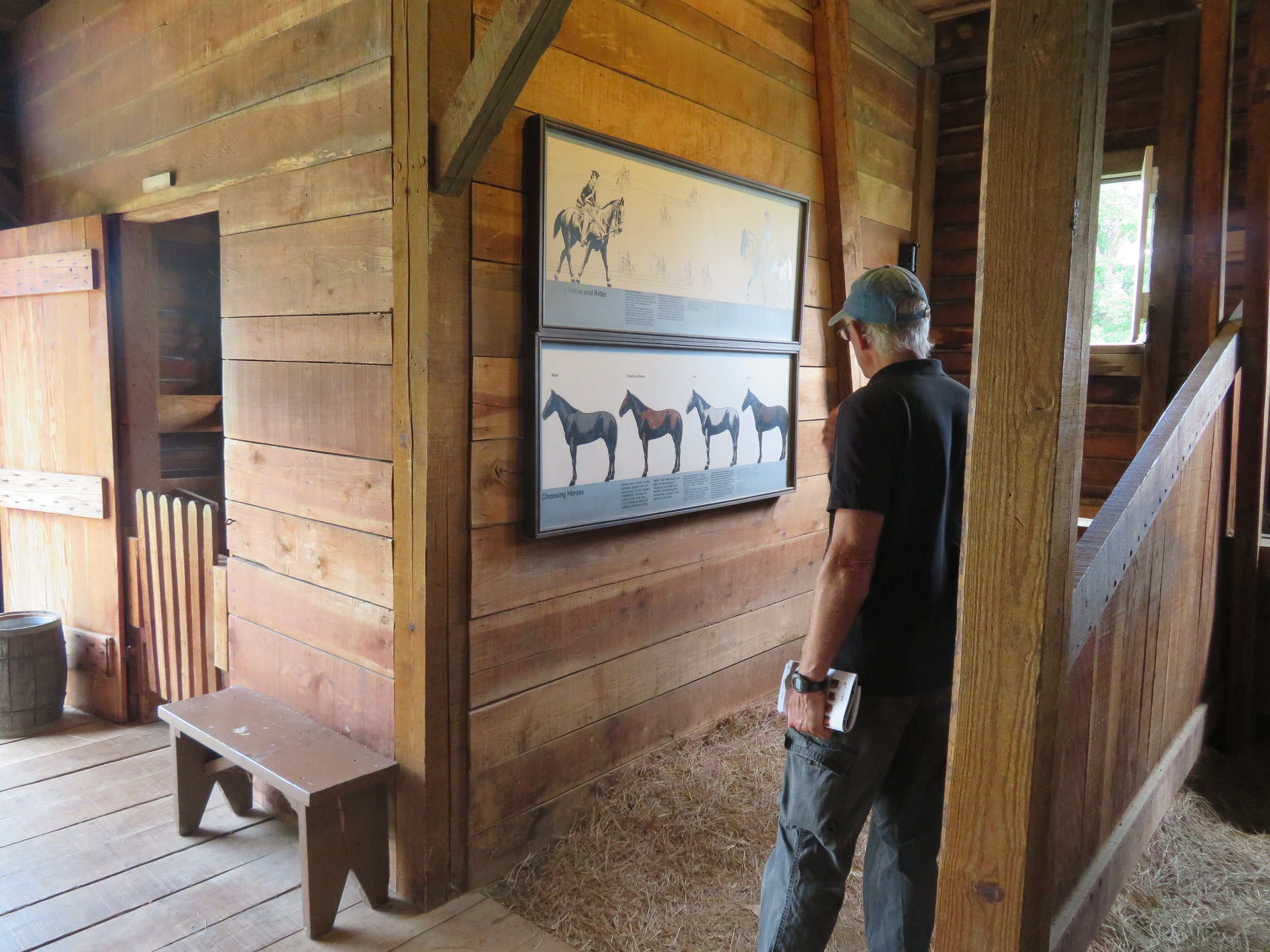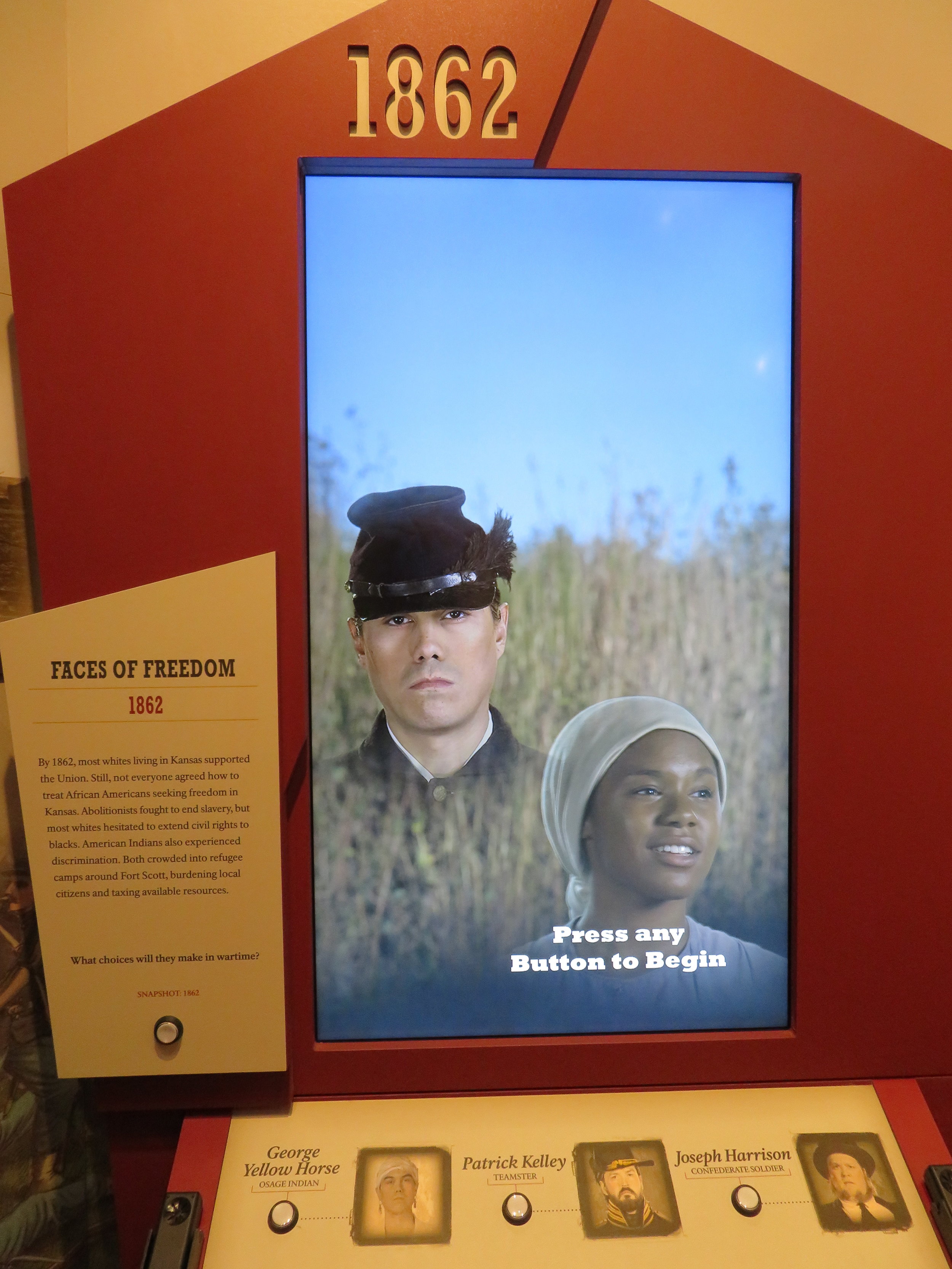Corn, Buddy Holly and Unsung Heroes
/There's lots and lots of corn in Iowa.
We left Britt and the National Hobo Convention feeling oddly exhilarated and so glad we’d attended. Like hobos, we had no special plans going forward other than getting on the road. But to where? We’d come to the heady conclusion that Iowa has a lot of corn and we’d probably seen enough corn fields for the time being … that is until we discovered one corn field that was worth exploring.
Buddy Holly's iconic black-rimmed glasses marked the entrance in the corn field to the crash site.
In Clear Lake, Iowa, in a vast cornfield on February 3, 1959, a plane crashed with Buddy Holly, Richie Valens, J.P ‘The Big Bopper’ Richardson and the pilot, Roger Peterson, aboard. It was the Day the Music Died. On a gravel road in the middle of nowhere, midst the tall, tasseled corn, a walking path had been mowed. A pair of huge, black-rimmed eyeglass frames marked the entrance to the crash site. We weren’t alone … three other cars were parked on the side of the dusty, gravel road. We walked the quarter mile in quiet reverence and joined the others to pay homage to three rock’n’roll icons. Click on the thumbnails to enlarge them.
When we departed, we added our names to the hundreds that were already inscribed on the poles displaying Buddy Holly’s iconic black-rimmed eyeglass frames.
We weren’t far away from Clear Lake now and made our way to the Surf Ballroom, the venue at which Holly, Valens and the Big Bopper had played their last gig. Unfortunately the small museum there was closed, but a monument marks the event and streets in town are named for each of them.
As we sped down the highway towards Missouri and Kansas, we saw a sign for the Covered Bridges of Madison County in Winterset, Iowa. We’d visited them back in 2010. Take a look.
We were beginning to see subtle changes in the terrain, fauna and flora. Blue bachelor buttons, sunflowers, brown-eyed Susans and milkweed lined the highway. Even the roadkill changed … instead of deer and skunks, we saw lots of flat raccoons and even armadillos. For no particular reason other than we like National Park sites, we decided Fort Scott National Historic Site in Fort Scott, Kansas would be a good stop and headed in that direction.
Fort Scott Historic Site, Fort Scott, Kansas
Fort Scott was established in 1842 and served as ‘one in a line of forts from Minnesota to Louisiana that helped to enforce the promise of a permanent Indian frontier. Soldiers kept peace between the white settlers, native peoples and relocated tribes.’ Of course, the very idea of a ‘permanent Indian frontier’ went to hell in a hand basket as settlers flocked westward in droves and westward expansion ultimately to the Pacific coast nearly doubled the country’s size in the 1840s.
By the late 1850s, the fort was no longer needed and in 1855, the buildings were sold at auction and a new town of Fort Scott was established. The slavery issue in the 1860s ripped Kansas apart. The Kansas-Nebraska Act of 1854 passed by Congress, gave states the right to determine whether they would be slave states or not. Unfortunately, folks pro and con flooded into the state to influence the vote and violence was commonplace between the groups. The era was and is still referred to as Bleeding Kansas. It was the Civil War in 1861 that brought the military back to Fort Scott under the Union commanders, serving as a key supply depot, a hospital and a refuge for displaced persons. The park's exhibit area provided an interesting, informative display contrasting the views of free-staters vs pro-slavery vs abolitionists vs slaves vs native Americans.
An interesting interactive media display contrasted the many views of Kansans on slavery.
The Civil War ended in 1865 and in 1869, the railroad came to Fort Scott and the military was used to protect railroad workers from settlers and squatters. ‘This set the state for a rare instance when US troops took up arms against American citizens to protect the country’s [and the railroads?] business interests.’
The old railroad station in the Fort Scott's historic downtown area.
Enough history … suffice it to say, the fort has been a National Historic Site since 1978 and restored by the National Park Service to its 1840s appearance. We toured the grounds, walked through the restored buildings and generally enjoyed a well-presented and well-preserved history lesson.
Lowell Milken Center for Unsung Heroes
Had we not stopped at the Fort Scott Chamber of Commerce, we would have probably left the town without experiencing something awe-inspiring … the Lowell Milken Center for Unsung Heroes. The modern, but unassuming building that houses this exhibition would be easy to miss, but, oh my, what powerful, heart-wrenching, emotionally-charged stories are told here. Perhaps you’ve heard of the Irena Sendler project aka Life in a Jar project. We had not.
Life in a Jar Project at the Lowell Milken Center for Unsung Heroes.
‘The inspirational story of Irena Sendler, who knocked on Jewish doors in the Warsaw ghetto and, in Sendler’s own words, “tried to talk the mothers out of their children.” It is also the story of the students from Kansas who rediscovered her [as part of a National History Day competition], each carrying her own painful burden and each called in her own complex way to spread the history of Irena Sendler.’
Another example of unsung heroes was the story of the Little Rock Nine and the few whites that befriended them.
Addie, our docent, provided a personal tour of the museum providing us with the story of Irena, but it didn’t end there. There were so many more examples of ‘unsung heroes’ that these students had ‘discovered’ and brought to light. We left emotionally-raw and more inspired than we can remember.
I’m in the process of reading “Life in Jar” and highly recommend it. If you ever get to Fort Scott … don’t miss this place!
Gordon Parks' photo of Ella Watson: American Gothic
And as if that wasn’t enough for this small Kansas town to offer, Fort Scott is also the birthplace of Gordon Parks, world-famous photographer, who became the first African-American staff photographer and writer for Life magazine in 1948. Against unbelievable adversity and racial prejudice which he managed to overcome, he left a legacy of awesome work behind him. We viewed his many photographs and works and felt that our decision to visit Fort Scott had been more rewarding than we could ever have imagined.
What’s next? Oh, there are more national parks to visit, more states to traverse and so much more to explore. Come on along for the ride … we love the company.



















